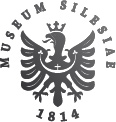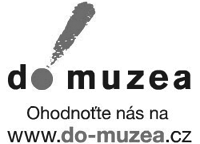Slezský sborník
rok 2015
ročník 113
číslo 2
Obsah / Contents
Studie / Articles (s. 207–388)
David RADEK: Zeměpanské strategie Matyáše Korvína v prostředí slezských knížat
s. 207–229
Territorial strategies of Matthias Corvinus in the milieu of the Silesian Princes
The main aim of the paper Territorial strategies of Matthias Corvinus in the milieu of the Silesian Princes is the analysis of the Hungarian king Matthias Corvinus' plans with the territory of the minor Czech lands. Matthias Corvinus, who in 1469 won the favour of the minor Bohemian lands, partially followed up to the previous steps of the Bohemian kings, primarily those towards Silesia. In the other half of his reign, in particular, we can identify apparent efforts to establish a dynasty domain in Silesia, especially in the Upper Silesia.
Key Words: Mathias Corvinus, Silesia, middle age, Lusatia, Georg from Poděbrad, power strategy
Marek STARÝ: Rod Pruskovských z Pruskova a jeho příslušnost k české a moravské šlechtě v době předbělohorské
s. 231–270
The Pruskovsky family of Pruskov and their affiliation with the Bohemian and Moravian nobility in pre-White-Mountain period
The paper maps the history of the Pruskovskys of Pruskov, a Silesian noble family, since the beginning of the mid-16th century until the outbreak of the Thirty Years' War. It shows their spreading in the Bohemian Crown lands and summarises changes in their possessions and public activities of individual family members.
Key Words: Inkolat, Moravia, Opava region, Lordly status, Pruskovsky, Silesia, nobility
Michal CHVOJKA: Die zweite Josephinische Reformwende von 1879/90 und die Organisation der „Polizey" zwischen Wien, Brünn und Troppau
s. 271–286
The Second Josephine Reform Reversal of 1789/90 and the "Policey" Organization between Vienna, Brno and Opava
In this study, the author analyzes the genesis of the so-called "second Josephine reversal of police reform" in the years 1789/90 and its progress in the Moravian-Silesian Governorate. It refers to the activities of the Governor Ugarte and Police director Okáč leading to a redefinition and redistribution of police powers in order to rationalize police system and to extricate it from the agenda of municipalities and governorate, as well as to Court Chancellery´s efforts to preserve its authority in police matters. Last but not least, it traces the way how the State Minister Pergen managed to restore at least half of the police administration system from before November 1786 and obtained important safety agenda for his subordinate police directorates.
Key Words: Joseph II., Moravia-Silesia, police reform, centralisation, police directorates, magistrates
Petr KADLEC: Sčítací orgány a národnostní problematika v prvorepublikových sčítáních lidu: Československé sčítací orgány v právních předpisech a nařízeních
s. 287–314
Census authorities and national issues in the First Republic censuses. Czechoslovak census authorities in legal regulations and decrees
The census authorities had an important role in census taking in the interwar Czechoslovakia. This paper deals with the role of the census authorities in the First Republic censuses in 1919, 1921 and 1930. Its aim is, upon the analysis of legislative measures, decrees and ordinances, to show the role of census commissioners and inspectors in the censuses above. Supported with the implementing regulations and publications back in the day, the study introduces the circumstances of the census authorities' selection and appointment, contents of their activities and the established control mechanisms. Primarily it is focused on national issues; to what extent a national aspect reflected in the implementing regulations, selecting census authorities and what were their competences to investigating nationalities of citizens. The study mainly refers to the Czech lands, but it also outlines the situation in Slovakia and Carpathian Ruthenia.
Key Words: census, nationality conflicts, the Czech Lands, Slovakia, 1918–1938
Aleš KREMPL – Zdeněk JIRÁSEK: Osídlení okresu Bruntál v letech 1945–1949
s. 315–338
The process of settlement in the Bruntál region in 1945–1949
Deportations of Germans after the World War II and their substitution with Czechs meant, in fact, a complete ethnic replacement of the citizens in the Bruntál district, which had a far-reaching impact on the further development in that area. The paper strives to capture the most important aspects of the displacement of Germans and, in particular, to evaluate the process of settlement with regard to the inner settlement, reemigration and repatriation in 1945–1949. Using mainly regional archives as sources, it shows some less known facts in respect to the process of settlement in the region and thus contributes to the knowledge on the most modern history of the Bruntál region.
Key Words: Bruntál, Germans, displacement, borderlands, reemigration, repatriation, Silesia
Michal KURZ: Klopotné znovuzrození Bílého města: Nová identita poválečné Opavy a její obraz v materiální struktuře historického centra
s. 361–388
Painful rebirth of White town: A new identity of the post-war Opava and its reflection in the material structure of the historic centre
The paper deals with architectonic and symbolic changes to the historic centre of Opava in 1945–1989. It focuses on the methods by which the representatives of the post-war political representation constructed the official image of Opava and on the values which they tried to manifest in the physical and symbolical space of the town, badly damaged due to the World War II. The politically and economicly motivated efforts to "recode" the preserved environment included demolitions of the original buildings, constructions of new buildings and monuments, reconstructions of some monuments and changes of the street names. The complex process of the gradual reconstruction of the Opava centre after 1945 can be perceived at a general sociocultural level as clear evidence of how the attitudes of the then political elites towards the historic environment of the town and its traditions were changing.
Key Words: Opava, 2nd half of the 20th century, image of the city, modern architecture, historic preservation, monuments
Oľga ŠRAJEROVÁ: K problematike sliezskej identity (z prvých výsledkov sociologického výskumu)
s. 361–388
Towards Silesian identity (first results of sociological research)
The main aim of submitted sociological research is to describe the identity of residents of the region. The basic factors and conditions of above-mentioned identity will be characterized together with the description of its content and intensity. Different tasks of the research are an analysis of the place which Silesia fills in collective memory of local inhabitants, as well as an analysis of relation of those inhabitants to the past of the Silesian region, their knowledge of local traditions and history (incl. concrete historical events and remarkable personalities). The purpose of the research is also to find how local residents relate to place where they are living; how can be described contemporary apprehension of the Silesian identity; who feels as a Silesian; which stereotypes are still present (and for how long) in minds of the locals and what is the kind of their national identity. The research is moreover interested in cultural and social life of residents of the Silesian region and in interethnic relationships between different nationalities based in Silesia.
Key Words: Historical Memory, National Regional Identity, Silesia
Materiály / Materials, (s. 389–393)
Kamil RODAN: Neslavně slavné narozeniny páně Hauerovy. Článek věnovaný k 80. narozeninám prof. PhDr. Lumíra Dokoupila, CSc.
s. 389–393
Recenze a zprávy o literatuře / Reviews and Brief Notices (s. 394–315)
Novinky polské historiografie (s. 416–417)
Kronika / Chronicle (s. 418–429)
Bibliografická příloha / Bibliography (s. 431–432)
Poslední aktualizace článku: 13.05.2016
Vytisknout celý článek







